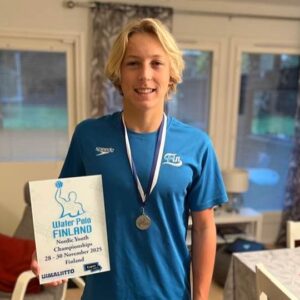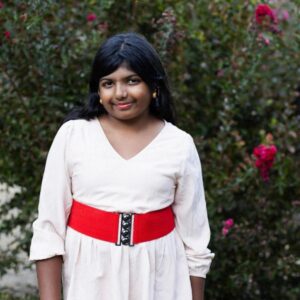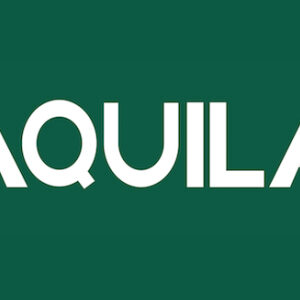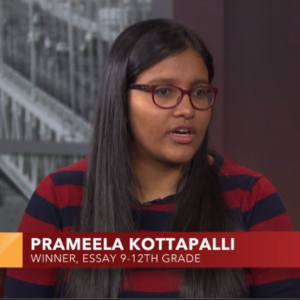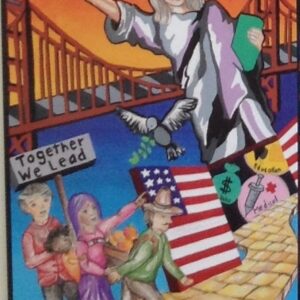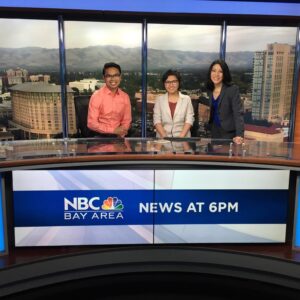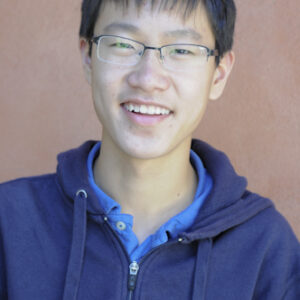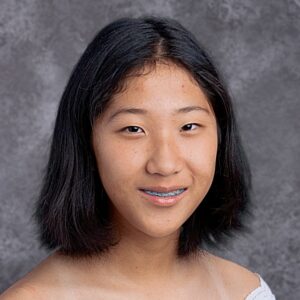Like many teenagers, Michelle Deng ’12 grappled over questions of individuality and fitting in. However, in addition to those quite typical teen concerns, she also worked out equally pressing and broader issues of cultural identity.
Deng recently addressed her uplifting journey towards affirming her identity as an Asian-American youth in last spring’s “Growing Up Asian in America” high school-aged writing contest. Deng stood out from hundreds of other contestants and won second place for her powerfully written essay, “International Orange.”
Growing Up Asian in America is a competitive art and essay program sponsored by the Asian Pacific Fund, the largest celebration of Asian heritage in America. The Fund has operated the program since 1995. Now, with the Golden Gate Bridge celebrating its 75th anniversary, the organization asked this year’s contestants to reflect upon the “bridges” in their own lives.
In her entry, Deng artfully compared her experience at coming to terms with being a Chinese American to architect Irving Morrow’s selection of paint color during the historic construction of the Golden Gate Bridge.
In her work, Deng noted that as a second-generation Chinese girl, she found the Silicon Valley a friendly place to grow up. “I often joke with visitors that you don’t even have to go to Chinatown to run into Chinese supermarkets, dim sum places and boba milk tea cafes within five minutes of one another,” Deng wrote in her essay, noting that she, therefore, never really felt defined by her ethnicity.
That all changed, however, when she traveled to China with her mother, and felt as “out of the water as a fish could be.” She recalled feeling more American than Chinese.
Throughout her writing, the choosing of a paint color for the Golden Gate Bridge served as a metaphor for her slowly evolving sense of identity. Personal narrative was expertly juxtaposed and intertwined with snapshots of how, back in 1933, Morrow selected and fought for a color choice that some had a hard time accepting at first.
Deng ended her essay with a scene of her symbolically standing before the Golden Gate Bridge, noting that strangely enough, despite having grown up less than an hour away, she’d never actually stepped onto the bridge before. She vividly described feeling like a tourist standing on the bridge for the first time.
Yet, somehow, she continued, the connection was far deeper. “This was my home. Wherever I was, I would take a part of this place with me, and I would be American, Asian, Californian, human, or what have you, and I would soar,” she wrote in her essay’s final line.
“We asked students to explore bridges that have been meaningful to them – whether real, physical bridges, or symbolic bridges that connect important parts of their lives, or help them cross through challenging personal journeys,” explained the contest sponsor on its website.
The Asian Pacific Fund reported being inundated with entries from students who have struggled with their identities, whether they have just arrived from Asia and are negotiating what it means to be American and Asian, or whether they are multiracial children trying to reconcile each side of their heritage.
“They have built bridges by learning foreign languages, cooking new cuisines, mending broken relationships, overcoming disability, watching YouTube, and experimenting with musical instruments. Their journeys are as diverse as their cultures, but many have arrived at similar destinations: a place where they don’t need to choose one side over the other, but are at peace standing right where they are – in the middle,” noted the fund.
Every year, around 1,400 Bay Area students in K-12 compete in the program by submitting artwork, essays and poems on a specific theme for some $27,000 in prizes. Winners receive savings bond awards worth $1,000-$2,000, and are honored at an awards ceremony at the Asian Art Museum. Special exhibits displaying the winning artwork and essays go on tour during Asian Pacific Heritage Month, and are hosted throughout the year by more than 50 public libraries all over the Bay Area. All winning entries are also archived online at the Asian Pacific Fund website.

